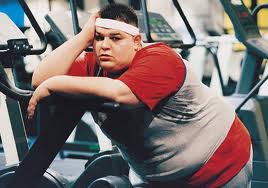Courtesy of:
John H. Keefe III, D.C.
(918) 663-1111
IN THE NEWS: 7 tips for reducing hunger if you're on a diet When you’re looking to shed a few extra pounds, do you really need to fight through hunger pains to know you’re losing weight? Lauren Blake, a dietitian at The Ohio State University Wexner Medical Center, agreed, and told Fox News that people shouldn’t restrict to the point that they’re always hungry. “There’s evidence that says when we restrict too much, it can be harmful to our metabolism, and it supports the loss of lean muscle mass,” she said. 1. Don’t skip breakfast. To regulate your hunger throughout the day, eat breakfast, whether that’s a bowl of cereal, some eggs, or even dinner leftovers, Planells said. 2. Keep healthy snacks on hand. To keep your blood sugar stable, avoid going four hours or more without eating, Planells said. Try snacks like yogurt, a handful of nuts, or even peanut butter and fruit to keep you full, he said. 3. Don’t drink your calories. Drinks deliver calories a lot faster than solids, Blake said. And since our guts sense fullness based on volume, not calories, drinks won’t leave us as satiated as solid foods, she explained. 4. Reach for whole, fiber-rich foods. Whole foods like fruits and vegetables are naturally lower in calories, and also have more water content and fiber that will keep you full longer, Blake said. Planells agreed: He noted that while the general American consumes about 10 grams of fiber per day, dietitians generally recommend Americans consume 25 to 30 grams per day. 5. Feature protein in your meals. Protein helps with satiety, Planells said. Try animal-based sources such as beef, chicken, pork, or fish, or plant-based sources like soy and quinoa, which have the added benefit of extra fiber, Planells said. 6. If you’re hungry late at night, drink a glass of water. Sometimes, we can mistake hunger for thirst. If you’re hungry late at night, try drinking a glass of water, Planells said. 7. Do order an appetizer if you’re dining out. It might seem counterintuitive, but don’t skip the appetizer section of the menu if you’re dining out. Opt for a bone-based soup or a salad to help fill you up and reduce the risk of overeating during the main course, Blake said.
WELLNESS: How to Improve Your Failing Ability to Read Clearly as You Age, With the Help of Sunshine Nearsightedness is incredibly common, affecting an estimated 40 percent of Americans and up to 90 percent of young adults in Asian countries. A 2015 study estimated up to one-third of the world's population may be nearsighted by the end of the decade — that's 2.5 billion people. The following year, a meta-analysis of 145 studies predicted nearly half of the world will be nearsighted by the year 2050. One longstanding theory was that excessive reading at close distance (particularly in poor lighting) could lead to nearsightedness. Research refutes this theory, noting a clear lack of association between the two. Mounting research now shows the risk of nearsightedness is closely linked to time spent outdoors, both for children and adults. To protect your vision, you need regular exposure to bright sunlight. Nearsightedness (myopia), is a vision problem in which close objects appear clear but distant objects are blurry. This condition is thought to be caused by refractive errors in your eye. Refraction is the bending of light as it passes through one object to another. When light rays are refracted through your eye's cornea and lens, they become focused on the retina, which then converts the light into messages sent through the optic nerve to your brain, which then interprets the messages into images. Refractive errors occur when the shape of your eye prevents light from focusing properly on your retina. This can occur by changes in the shape of your eye, such as the length of your eyeball or shape of your cornea, and/or changes in your lens due to aging. But what exactly is responsible for these changes? Two studies, the first published in 20077 and the second in 2008, found that rates of nearsightedness in children appeared to be closely linked to the amount of time spent outdoors. The greater the number of hours spent playing outside, the lower the risk of nearsightedness. In other words, keeping kids indoors and/or instilling a fear of sun exposure (for skin cancer reasons) may be at the heart of the world's growing myopia problem. Remarkably, according to a British survey, 75 percent of children in the U.K. spend less time outdoors than prison inmates!
CHIROPRACTIC: Reduction of Labor and Delivery Time Due to Chiropractic Care The Journal of Pediatric, Maternal & Family Health published a case study on April 3, 2017, documenting the case of a woman who experienced a shorter and easier birth due to chiropractic care. This improvement was compared to her first pregnancy and delivery where she did not receive any chiropractic care. The study begins by noting that chiropractic care has been involved in the care of pregnant women since the early days of the profession over a century ago. In this study, a 28-year-old woman went to the chiropractor for evaluation and possible care. She sought chiropractic for a pain in her tailbone area as well as for wellness care. The woman believed that her pelvis had shifted due to her first pregnancy. She reported that after the delivery of her firstborn, she experienced pain and discomfort at her tailbone any time she sat on a hard surface. The woman reported that her first pregnancy went well, but that her delivery was very long and difficult. This was one of the factors in her desire to receive chiropractic care in anticipation of her second pregnancy. Her history revealed that between the ages of eight and sixteen, she was a competitive gymnast and was receiving chiropractic intermittently during that time. She also noted that she did not receive any chiropractic care during her first pregnancy. Prior to her first pregnancy, she did not have tailbone pain. She later attributed her long and difficult labor and delivery as being the cause of the tailbone pain. As with her first birth, the woman decided to have her second child at home. She was supervised by the same Certified Professional Midwife (CPM) that attended her first home birth. According to the midwife, the woman's first labor and delivery time combined was 32 hours and 25 minutes. After chiropractic care, the midwife reported that the woman's labor and delivery times for her second child was only two hours and 45 minutes combined. In their conclusion, the study authors note that chiropractic care during pregnancy is far more valuable than just symptomatic relief of musculoskeletal pains, and should be considered for the overall wellness and process of pregnancy. They stated, "This case report provides supporting evidence that subluxation centered chiropractic care on pregnant patients can have beneficial effects on the birthing process."
FUNNY BONE: If someone from the 1950s suddenly appeared, what would be the most difficult thing to explain about life today? One answer: “I possess a device in my pocket that is capable of accessing the entirety of information known to man. I use it to look at pictures of cats and get into arguments with strangers.”





